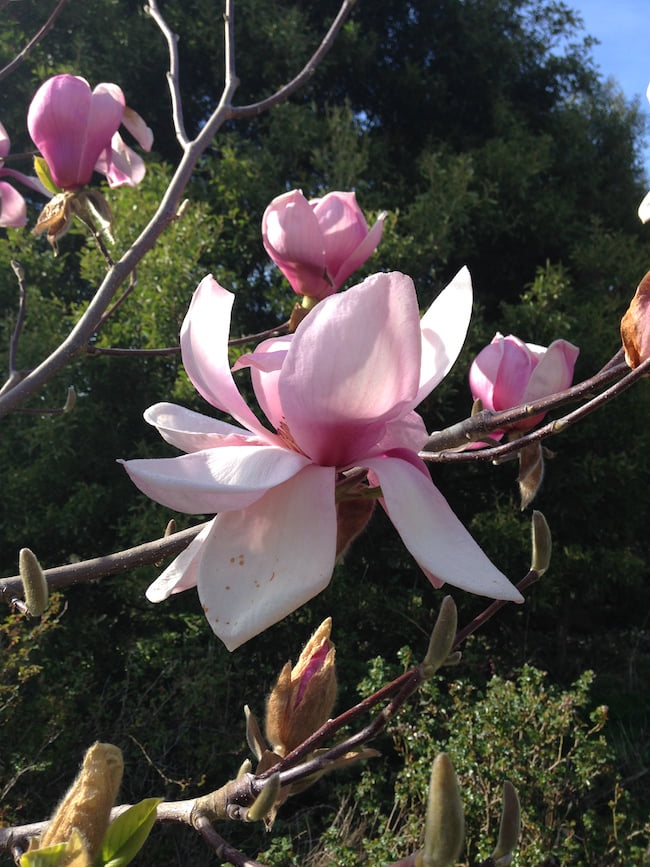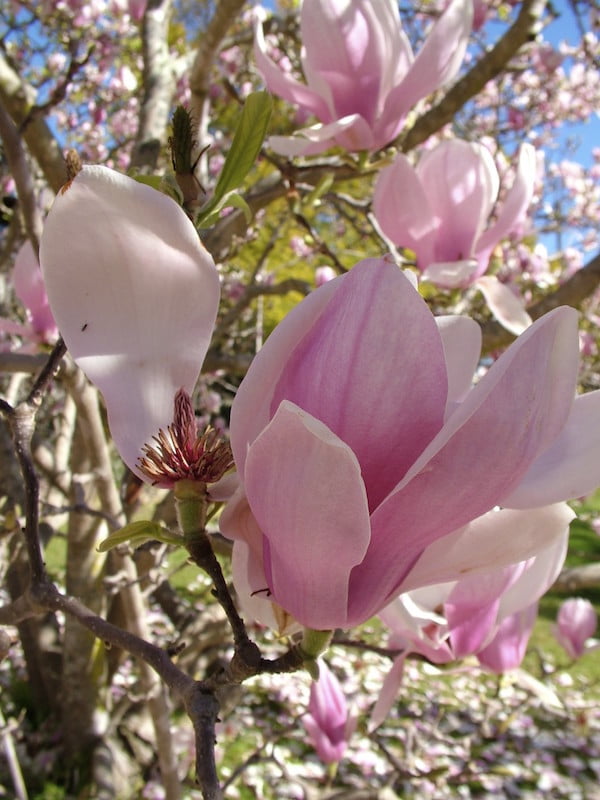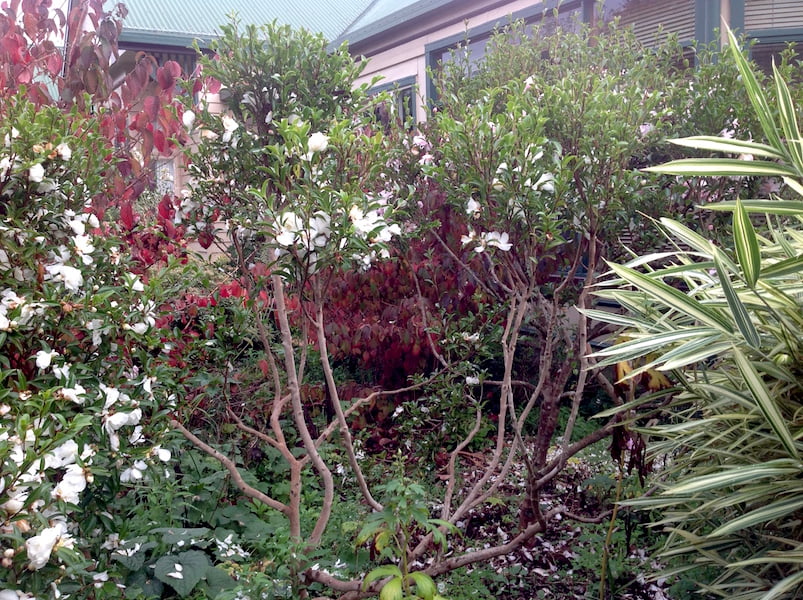“I have two lovely magnolias, a sea view and a husband with a chainsaw,” began the question from one of the women in the audience at the club where I was guest speaker. “He wants to prune the magnolias,” she added. “What should I do?”
I didn’t have a good feeling about future for those magnolias but I did my best to save them with advice about how to deal with the tricky situation.

Beautiful spring flowers on Magnolia
Evidently the magnolias have grown so well they are now blocking the sea view and her chainsaw-wielding hubby enjoys his sea view. This is a common scenario and trees usually come off second best to the view. Pruning the magnolias however was not going to give a good outcome for the homeowners, the view or the tree.
When a magnolia is pruned it loses its naturally rounded shape. Where the stems are cut the plant sends up vertical growth. This strong new growth would quickly block out the view with dense branches. As well, in winter when the tree is bare, the ugly cut branches would be in clear sight, spoiling the view of the sea beyond.
If any pruning is done during hot weather, there’s also a chance that the exposed branches could suffer sunburn leading to dieback.

Rich pink flowers on Magnolia x soulangeana. Photo Sandra Heggen
The trees in question were Magnolia x soulangeana, which is a deciduous, spring-flowering magnolia. It is a classy and beautiful small tree that grows to around 6m high and wide. In summer it is green and leafy but in autumn the leaves fall. With the leaves gone from these trees, the view of the sea would be seen clearly through autumn and winter viewed through a tracery of branches.

Magnolia x soulangeana in flower against a brilliant blue sky is a sight to behold. Photo Sandra Heggen
Come late winter or early spring when the tree blooms on its bare silver branches, the deep pink and white saucer-shaped blooms would look spectacular against the backdrop of the blue sea and sky or even a grey sea and sky.
It is after the flowering as the new leaf growth erupts that the tree will again block out the sea view and the seaside suburb may hear the sound of a revving chainsaw.
Pruning tips
I recommended that the garden owner watched the trees over the coming winter to see which minor branches could be carefully pruned away to reveal more of the view. The aim of this type of pruning wouldn’t be to shorten the overall height of the tree, but to thin out the secondary or tertiary branches to create more transparency.
Rather than using the chainsaw, these thinner branches could be removed delicately with secateurs or shears cutting flush with the main branches.

Judicious pruning, such as on these sasanqua camellias, can open up views through without damaging the plant’s overall shape
As pruning encourages new growth, the pruned areas would need to be kept under observation. When new shoots appear, they too should be cut away or better still, rubbed off by hand. This technique is useful for any pruning where clusters of new growth form around a pruning cut. Rubbing away the soft new growth as soon as it emerges gradually deters any further growth.
Japanese gardeners, who know how to wield secateurs to create eye-catching bonsai and topiary plants, describe this type of pruning as:
“creating space for a bird to fly through the branches”
Creating more space
Lightening a canopy so it can be looked through is also a handy technique to use to let more light into gardens filled with dense leafy growth. The extra sunlight may mean there’s a chance for flowers, a few vegies or herbs to grow beneath the canopy.
Thinning side growth and clipping the top growth into green ‘clouds’ creates a striking garden feature as well as revealing interesting branches and making space for more plants. Evergreen shrubs such as sasanqua camellia and euonymus are good candidates for this type of pruning.
